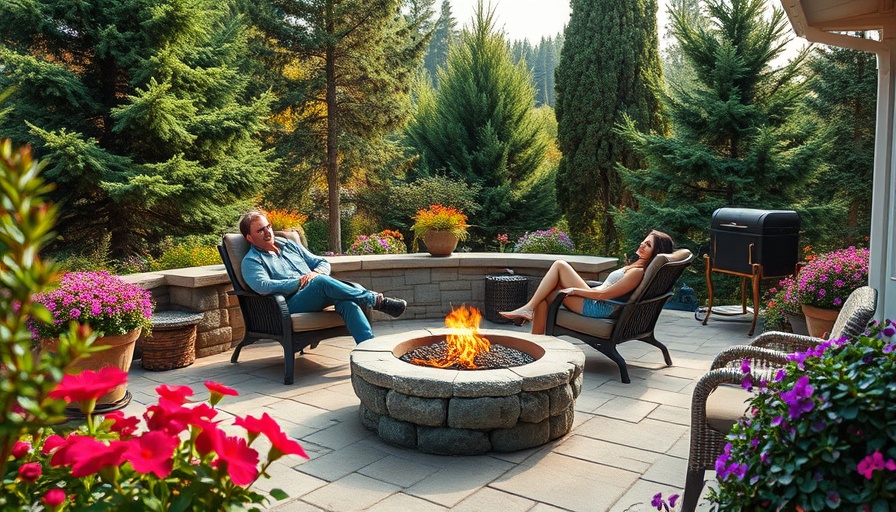
Understanding the Importance of Landscaping Planning
Landscaping is not just about aesthetics; it's about creating a welcoming space that reflects your lifestyle and values. For homeowners, especially those aged 40 to 65, the outdoor area becomes an extension of the home, an investment in both beauty and functionality. A well-planned landscape can boost curb appeal and increase property value significantly. However, common mistakes in landscaping projects can turn joy into frustration. Here, we delve into some pitfalls to avoid, ensuring your project leads to a successful transformation.
Why Comprehensive Plant Planning Matters
Rushing to fill a shopping cart with vibrant plants can be tempting, but doing so without a comprehensive plan often leads to chaos. Take the time to design your landscape by considering color schemes, plant heights, and blooming seasons. Utilizing design apps can help your visualization process. A well-thought-out planting scheme not only optimizes space but harmonizes the entire yard, making it appealing year-round.
Considering Plant Growth: A Long-term Vision
It's easy to be dazzled by small, youthful plants, but neglecting to consider their mature size is a mistake that can haunt you for years. For instance, a small tree that looks perfect in a corner might, in a few years, block your windows or overcrowd your space. Always research the expected growth of your selected plants and allocate sufficient space for their future expansion. This consideration can save you from costly and frustrating adjustments down the line.
The Vital Role of Soil Preparation and Mulching
Healthy soil is the foundation of any successful landscape. Skipping this critical preparation phase can lead to struggling plants that face various nutrient deficiencies. Consider performing a soil test to gauge pH levels and nutrient content, amending as necessary. Additionally, applying compost improves soil structure and drainage, while a proper layer of mulch helps regulate soil temperature and moisture retention. Remember, refreshing mulch every season not only maintains its effectiveness but also enhances your yard’s aesthetics.
Creating Inviting and Safe Outdoor Spaces with Lighting
Outdoor lighting plays a dual role in safety and ambiance. Without adequate lighting, your landscape may become uninviting once the sun sets, and navigating through can become a challenge. By incorporating a judicious mix of pathway lights, uplighting for trees, and accent lights around key features, you can enhance both functionality and aesthetics. Quality lighting extends your enjoyment of the outdoor space, making evening gatherings more pleasant.
Balancing Hardscape and Softscape for Cohesion
Achieving a balanced landscape requires a thoughtful mix of both hardscape (patios, walkways) and softscape (gardens, lawns). Ignoring one can result in a landscape that feels incomplete. Hardscaping adds structure, while softscapes contribute warmth and color. When designing your outdoor space, consider materials and colors that complement each other and are in harmony with your home’s style. This balance can create functional areas for relaxation, entertainment, and smooth movement through your yard.
Actionable Insights for Future Landscaping Success
Making informed decisions can ease the landscaping process. Take the time to visualize your complete project before implementation. Gather insights from local gardening groups, or consult with professional landscapers who can provide tailored advice based on your unique property and preferences. Investing time upfront in planning and preparation can yield a rewarding and harmonious landscape that you’ll enjoy for years.
As you embark on your landscaping journey, remember that preparation and thoughtful design are key. Avoiding these common mistakes will save you money and enhance the enjoyment of your outdoor space.
 Add Row
Add Row  Add
Add 




Write A Comment